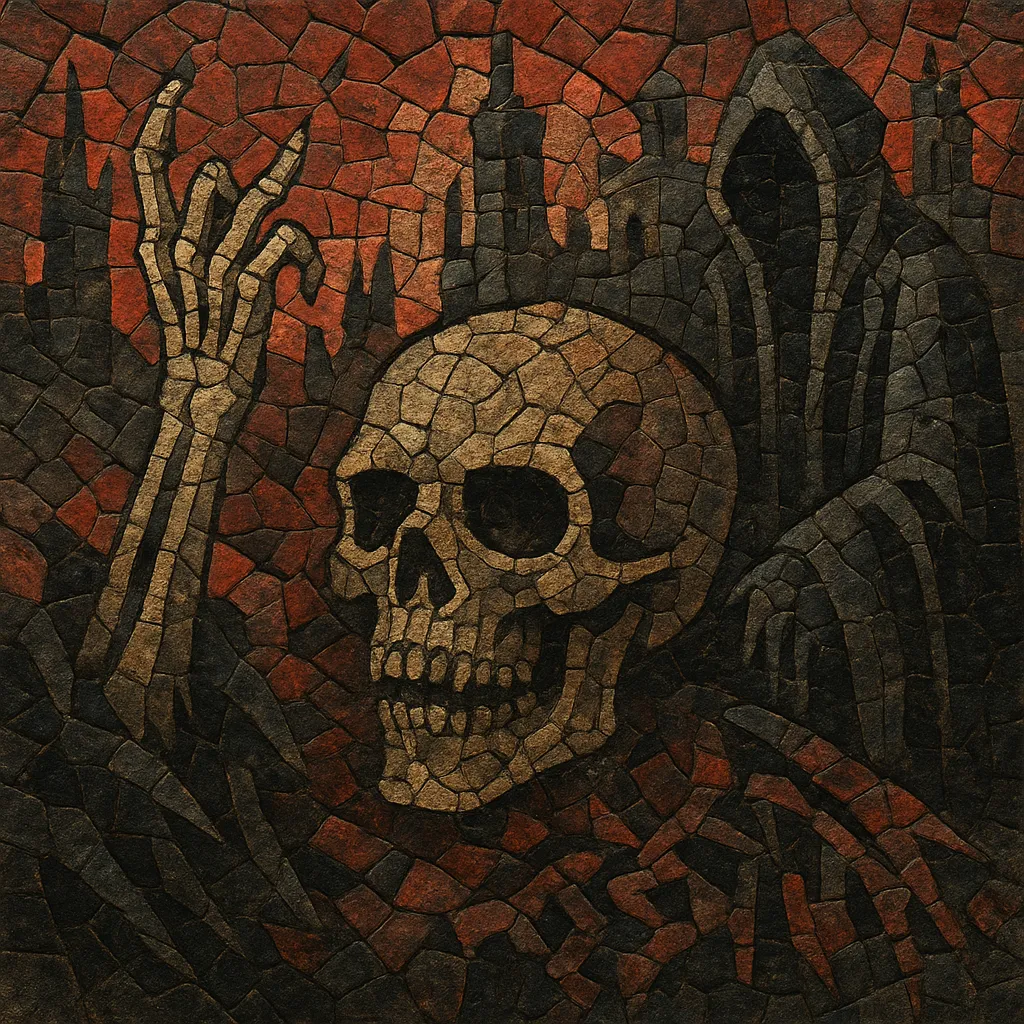
Old school death metal (OSDM) is the formative, raw strain of death metal that took shape in the mid-to-late 1980s. It emphasizes downtuned, palm-muted riffing, tremolo-picked lines, and thunderous drums that shift between blast beats, skank beats, and mid-tempo stomps. Vocals are guttural and cavernous, projecting themes of mortality, horror, occultism, and decay.
Production is intentionally unvarnished: guitars are thick and abrasive, drums are natural and roomy, and mixes privilege heaviness and atmosphere over precision. US bands typically favored tight, chug-heavy riff chains and chromatic menace, while the Swedish branch popularized the infamous “buzzsaw” guitar tone driven by the Boss HM-2 pedal. Song structures often unfold as riff-suites rather than strict verse–chorus forms, creating an inexorable, subterranean momentum.
Old school death metal emerged in the United States—especially Florida’s Tampa scene—where extreme thrash and hardcore punk converged with darker aesthetics and lower tunings. Early works by Possessed and Death laid the blueprint with faster tempos, growled vocals, and morbid themes. The Morrisound Studios hub (producer/engineer Scott Burns) became synonymous with the genre’s punchy, heavy yet organic sound.
In parallel, Sweden’s Stockholm scene codified a distinct OSDM flavor. Bands like Entombed, Dismember, and Grave used the Boss HM-2 pedal with amps cranked for the “buzzsaw” tone: a chainsaw-like wall of midrange that defined the Scandinavian take. Recording at Sunlight Studio with Tomas Skogsberg yielded gritty, reverb-tinged mixes that contrasted with the tighter US sound.
By the early 1990s, OSDM was globally established. US acts such as Morbid Angel, Obituary, Autopsy, Deicide, and Cannibal Corpse pushed speed, atmosphere, and brutality. Simultaneously, new branches formed: death-doom slowed the pace with funereal weight; technical and brutal death metal emphasized complexity and extremity; and UK groups like Bolt Thrower solidified a martial, mid-tempo heft.
Although more polished substyles briefly eclipsed the old-school approach, OSDM never disappeared. The 2010s and 2020s saw a robust revival, with newer bands and labels embracing analog grit, dynamic performances, and cavernous production. This resurgence reaffirmed the enduring appeal of OSDM’s riff-first songwriting, primal atmosphere, and unapologetically heavy sound.

